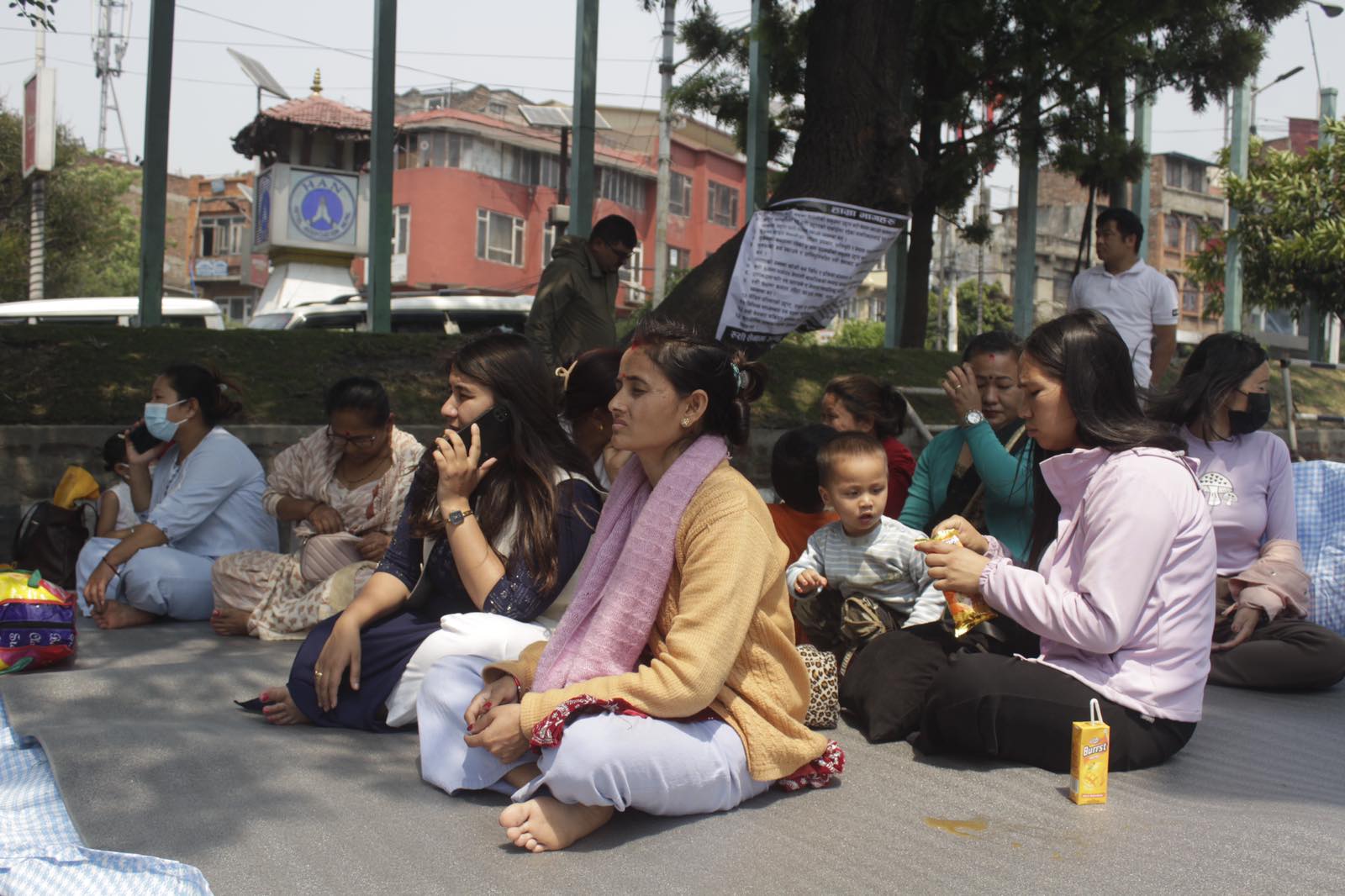
OR
Media Sutra

We are always looking for new internet haunts but during our search we often find online tags that are fragmented, jumbled and confusing
As internet access is now available to nearly half the population, the “digital first” strategy of many newsrooms now looks more valid than ever. And the relevant question before many users is this: how findable, searchable, usable, or readable are our news websites?
Unless users decide to directly visit news sites, they have to rely on search engines like Google, Yahoo or Bing to find and access a particular news site. Research has shown that 87 percent of users do not navigate beyond the first page of the search results, typically displayed in the form of title meta-tags, URLs and meta-descriptions.
Journalists, media managers and developers need to work in tandem to design an effective search engine optimization (SEO) strategy not only to render high visibility to their site and a strong “first impression” but also to enhance their brand and attract more traffic.
The meta-tags are “really important as they identify the brand or the news sites and provide a brief description about their personality or philosophy during search results”, says Sunil Rijal, CEO at SoftNep, a leading website, software, apps design and development company.
These days, we are always looking for our new internet haunts but we often find many tags fragmented, scattered, jumbled and even befuddling. Curious, I recently analyzed the tags for 53 of our major news sites. Verdict: We need to enhance our SEO strategy to benefit our journalistic practice.
Ideally, a meta-title tag comes with the title of the news outlet followed immediately by the official slogan of the outlet or some other motto reflecting the core attribute(s) of the news organization.
This helps with brand recall, leaving no room for the user to mentally associate the tag with anything other than what is given with the tag.
Thirty-two of the sites had no slogans with their meta-titles. These included websites like Annapurna Post, Arthik Abhiyan, Gorkhapatra, Himalaya Times, Karobar Daily, Rajdhani, the Rising Nepal, RSS, bahrakhari,com, ekantipur.com, bizmandu.com, nepalipost.com, pahilopost.com, newsofnepal.com, and recordnepal.com, etc. Websites of radio and television stations scarcely used slogans with meta-tags.
As the most salient feature of the title tag slogans used by a few sites, there was as much emphasis on the ranking of the news outlet as there was on Nepal as the country of news origin. News websites like nagariknews.com, enayapatrika.com, myrepublica.com, thehimalayantimes.com, Outline News Service, News24 TV, and onlinekhabar.com emphasized top ranking (“No. 1 news portal of Nepal”, “One of the top news portals of Nepal”, Nepal’s no. 1 English daily”, “First news agency of Nepal”, and “Premium news channel”, etc.).
Other descriptive slogans, used less frequently, stressed the online medium (news portal, online news), content variety and breadth, news values (truth, trust), speed of information, and the audience (your station, most-listened). Exhortative slogans were rarely found, for example, “read online latest news and articles from Nepal” (the Kathmandu Post) and “welcome to... [our site] (Outline News Service). Online tags reflected stark variance from official motto of a news organization thus impairing branding consistency. Except for outlets like the Himalayan Times, Setopati, Capital FM and News24 TV, few sites used their original official slogan in title tags.
Another conspicuous feature, and a wasteful use of space for that matter, was the repeat of title keywords in the meta-tags of some broadcast media sites (Image FM, Himalaya TV, Kantipur TV, and Sagarmatha TV). A few websites appended the place name “Kathmandu” or the link “Home” to the title tag. In a rare and a stupefying case, a title meta-tag for a renowned publication site simply read “Nepalko rashtriya dainik [Nepal’s national daily], Online News and articles from…” That was the meta-title tag for Kantipur daily. Sometimes, domain names are verbatim used for title meta-tags, as in the case of radioannapurnanepal.com, indistinguishable from other FM station with similar name. Some title tags are misleading. For instance, the tag for newsofnepal.com splashed names of various in-house publications, but they are nowhere to be found on the actual website.
Perhaps the most unambiguous part of the meta-tags is what follows them; most Nepali news sites use generic and premium keyword domain names, which help improve searchability. Over 64 percent of the sites had generic domain name (.com) and only seven used second-level country domain names (.com.np). Country code top level domain name (.np), which would help enhance localized search, is still not in vogue in Nepal.
A few government and community-based news sites use .org.np or .gov.np (therisingnepal.org.np, radiosagarmatha.org.np, ntv.org.np, and radionepal.gov.np). That is not uniform across government outlets. Three of the major television stations are under .tv (avenues.tv, news24nepal.tv, and sagarmatha.tv). Subdomains for publications were used only by Kantipur under ekantipur.com (ex.kantipur.ekantipur.com, ktv.ekantipur.com).
No matter how unique the domain name, some publications share almost identical names thus making it difficult to find the site. See for yourself how much effort it will take to locate, for instance, Himalaya Times (different from the Himalayan Times) or Radio Annapurna (different from the one based in Pokhara).
A meta-description that follows the title tag and domain name offers a little more “about” information on the webpage, designed to grab the attention of the user. We can see a clear contrast in its use by various Nepali news sites. Search engines listed meta-descriptions for half the sample sites, most often describing the general attributes of the site with strategic key words.
Some descriptions highlighted slogans, country of origin, self-declared ranking, news values, and date of launch, among others. Sometimes several of these attributes were pieced together in a single description. Redundancy was a key feature; more than 20 percent of descriptions repeated the title from the title tag.
A quarter of the descriptions consisted of strings of fragments like contact details, address, content types, website menus, and links (including to foreign exchange rate, and horoscope).
These often blended with outlet titles. Examples of such news sites included rajdhanidaily.com, thehimalayantimes.com, himalkhabar.com, imagefm.com.np, radionepal.gov.np, radiosagarmatha.org.np, abctvlive.com, imagechannel.com.np, baahrakhari.com, etc.
Nearly one-third of the descriptions had no relevant meta-descriptions. These came with a befuddling mix of news headlines or blurbs, indicating that developers had included nothing in the meta-description code for these web pages. Examples include gorkhapatraonline.com, ehimalayatimes.com, therisingnepal.org.np, several of the radio and television stations as well as online news portals such as bizmandu.com, pahilopost.com, and recordnepal.com. These do not look like meta-descriptions but they serve as substitutes anyway: License for hunting in Kanchenjunga, Nepal’s participation in China’s One-Belt One-Road initiative, never-ending political instability, attack on women on witchcraft charge, a tender notice, among others.
Finally, a website’s personality involves more than just meta-tags. At the least, the motto, masthead and the logo used on the homepage of the website help reinforce the outlet’s brand identity. Here again, it is difficult to find uniformity among the sites. Almost half of these sites do not display any official slogan on their mastheads.
Most news sites use some form of logo, or a masthead, and some, like Radio Nepal and ekantipur.com, display more than one logo or masthead. In many sites, user’s first experience is often hampered by overcrowding of images and sometimes slogans, and by low resolution GIFs as well as illegible fonts in the logos or the masthead. That’s a branding opportunity lost.
Design and navigation have become integral parts of journalism today. And yet, as Rijal observes, while there are designers and developers in most companies in Nepal, we lack in-house SEO professionals or consultants to advise on the tags or branding information. Clients believe such tasks would be carried out by the development team, he comments, but most development teams think such tasks would be provided/asked for by the clients.
Rijal stresses that news outlets need to ensure that their branding is done consistently across all the media and channels: “Reflecting the brand consistency online means credibility for their web sites amongst the users”.
@dharmaadhikari
You May Like This

Google moves to restrict ads on fake news sites
SAN FRANCISCO, Nov 15: Alphabet Inc's Google said on Monday it is working on a policy change to prevent websites that... Read More...

Fake news and censorship
Around the world, the number of honest journalists jailed for publishing fake or fictitious news is at an all-time high... Read More...

PCN seeks clarification from 8 news portals for publishing gruesome photographs
KATHMANDU, Aug 28: The Press Council Nepal (PCN) has sought clarification from eight online news portals for publishing gruesome photographs related... Read More...

Just In
- Indians vote in the first phase of the world’s largest election as Modi seeks a third term
- Kushal Dixit selected for London Marathon
- Nepal faces Hong Kong today for ACC Emerging Teams Asia Cup
- 286 new industries registered in Nepal in first nine months of current FY, attracting Rs 165 billion investment
- UML's National Convention Representatives Council meeting today
- Gandaki Province CM assigns ministerial portfolios to Hari Bahadur Chuman and Deepak Manange
- 352 climbers obtain permits to ascend Mount Everest this season
- 16 candidates shortlisted for CEO position at Nepal Tourism Board







_20220508065243.jpg)











Leave A Comment